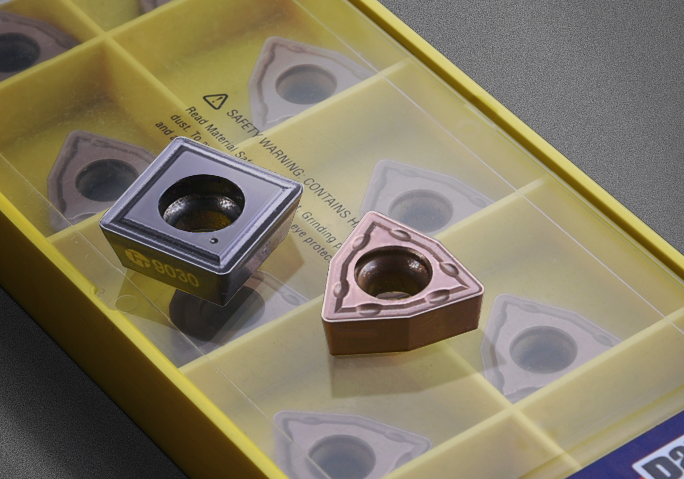
Mastering Precision: A Deep Dive into Chip Breakers of CNC Inserts
Share
Introduction:
In the intricate realm of CNC (Computer Numerical Control) machining, where precision is paramount and efficiency is key, chip breakers emerge as silent champions in the quest for machining excellence. These small yet crucial features embedded in CNC inserts play a pivotal role in controlling chip formation, improving chip evacuation, and enhancing surface finish quality. In this comprehensive guide, we embark on a journey to explore the chip breakers of CNC inserts, unraveling their intricacies, designs, and significance in the dynamic landscape of modern machining.
Understanding CNC Inserts:
Before delving into the intricacies of chip breakers, it's essential to grasp the fundamental role CNC inserts play in machining. CNC inserts, also known as cutting inserts or tool inserts, are replaceable cutting tips meticulously crafted for CNC machining operations. They come in various shapes, sizes, and materials, each tailored to specific machining applications and requirements.
Unveiling Chip Breakers:
Chip breakers represent a critical aspect of CNC inserts, designed to disrupt and control the formation of chips during machining operations. These specialized features are engineered to improve chip evacuation, reduce tool wear, and enhance surface finish quality. Let's explore the different types of chip breakers found in CNC inserts and uncover their unique characteristics and applications.
1. Straight Chip Breakers:
- Overview: Straight chip breakers feature a linear groove or notch along the cutting edge of the insert.
- Characteristics: Straight chip breakers excel in breaking chips into smaller segments, reducing chip length and improving chip evacuation.
- Applications: Straight chip breakers are commonly used in turning, facing, and grooving operations where chip control is critical for maintaining surface finish quality.
2. Curved Chip Breakers:
- Overview: Curved chip breakers feature a curved or serrated profile along the cutting edge of the insert.
- Characteristics: Curved chip breakers are designed to produce short, curled chips that are easier to evacuate from the cutting zone.
- Applications: Curved chip breakers are ideal for machining ductile materials such as aluminum and copper alloys, as well as for interrupted cutting applications where chip control is essential.
3. Serrated Chip Breakers:
- Overview: Serrated chip breakers feature a series of serrations or teeth along the cutting edge of the insert.
- Characteristics: Serrated chip breakers provide multiple points of chip disruption, resulting in effective chip breaking and evacuation.
- Applications: Serrated chip breakers are commonly used in milling and drilling operations, as well as in roughing applications where chip control is critical for prolonging tool life.
4. Variable Pitch Chip Breakers:
- Overview: Variable pitch chip breakers feature a variable spacing or pitch along the cutting edge of the insert.
- Characteristics: Variable pitch chip breakers offer enhanced chip control and evacuation by varying the frequency of chip disruption.
- Applications: Variable pitch chip breakers are versatile and can be used in a wide range of machining operations, from roughing to finishing, across various materials and cutting conditions.
5. Radial Chip Breakers:
- Overview: Radial chip breakers feature grooves or notches radiating outward from the center of the insert.
- Characteristics: Radial chip breakers are designed to produce short, tightly curled chips that are easy to evacuate from the cutting zone.
- Applications: Radial chip breakers are commonly used in turning and grooving operations, as well as in interrupted cutting applications where chip control is crucial for surface finish quality.




